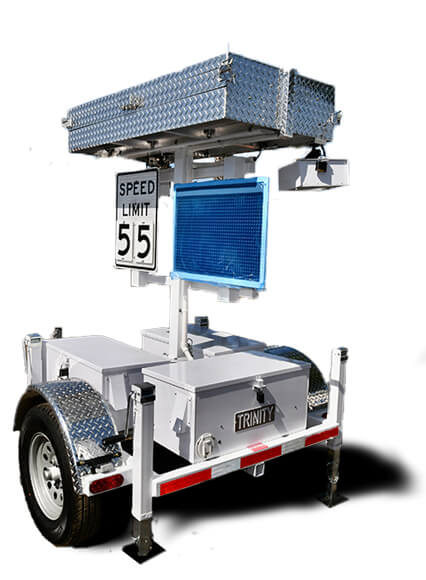
Texas Border Business
By Roberto Hugo González
Mission Police Department is setting a new standard for law enforcement through its state-of-the-art surveillance and response systems.
In the heart of Mission, Texas, a new era of policing is beginning to unfold. Spearheaded by the vision of Chief Cesar Torres, the Mission Police Department is leading the way in proactive law enforcement, leveraging cutting-edge technology to deter crime before it happens. The approach, centered around using advanced surveillance equipment, aims to spot potential criminal activities, enabling swift law enforcement action and significantly increasing the safety of the city’s residents.
The new arsenal includes 15 cameras equipped with License Plate Readers (LPRs) spread strategically across the city. Ten are pole-mounted, while four others have been placed in patrol cars. The department has also attached an LPR camera to a speed radar trailer. This setup allows for comprehensive surveillance of the city’s streets, capturing the license plates of passing vehicles while simultaneously keeping a check on speed limits.

The Engine behind Proactive Policing
The real power of this setup lies in its backend. The system immediately alerts the department when a vehicle of interest is detected. Chief Torres offered an insight into the functionality of the system by giving an example of a hypothetical bank robbery. Once identified through its license plate, the perpetrator’s vehicle is monitored whenever it passes a camera. This information is then relayed to a central system that assists in tracking the offender, significantly expediting the response and apprehension process.
The efficiency and effectiveness of LPR technology stand undisputed. In scenarios requiring immediate attention, the technology triggers alerts at ports of entry, checkpoints, and any location equipped with LPR cameras. This rapid, coordinated response is a potential game-changer in the fight against crime, promising to deter criminals and keep the streets safer.
Proven Effectiveness and Future Plans
The system, active for approximately four weeks in Mission, has already contributed to solving several crimes in the city. “Further, the department has secured a five-year subscription to the technology and plans to expand its coverage across the city significantly.” Chief Torres said, “This initiative, funded by a Texas Anti-Gang Grant of over $6 million, underlines the city’s commitment to innovative policing.”
Chief Torres pointed out that adopting LPR technology is not an isolated phenomenon. Across the nation, an increasing number of cities, counties, state agencies, and federal departments are integrating this technology into their security frameworks. The main driver behind this trend is the proven effectiveness of LPRs in solving and deterring crimes.
Prioritizing Deterrence: A Model Shift in Policing
“The central philosophy behind incorporating this technology is the concept of deterrence.” Chief Torres sees his duty as the Police Chief of Mission to prevent crime before it occurs. With this advanced technology at hand, the chances of criminals being apprehended increase substantially, effectively serving as a potent deterrent.
In addition to deterring criminal activities, technology brings about other significant benefits. Efficiency in solving crimes is greatly enhanced, and the feeling of safety among the citizens is strengthened.
The Mission Police Department’s innovative approach to law enforcement, built on the pillars of advanced technology and proactive action, is a decisive moment in community safety. By prioritizing deterrence over reactionary measures, Chief Torres and his team are revolutionizing how policing is conducted.
Their work is evidence of the potential of technology in enhancing law enforcement, and their model of proactive policing serves as a blueprint for other departments across the nation. Their story is a reminder that when properly harnessed, innovation can be invaluable in ensuring community safety and justice.















